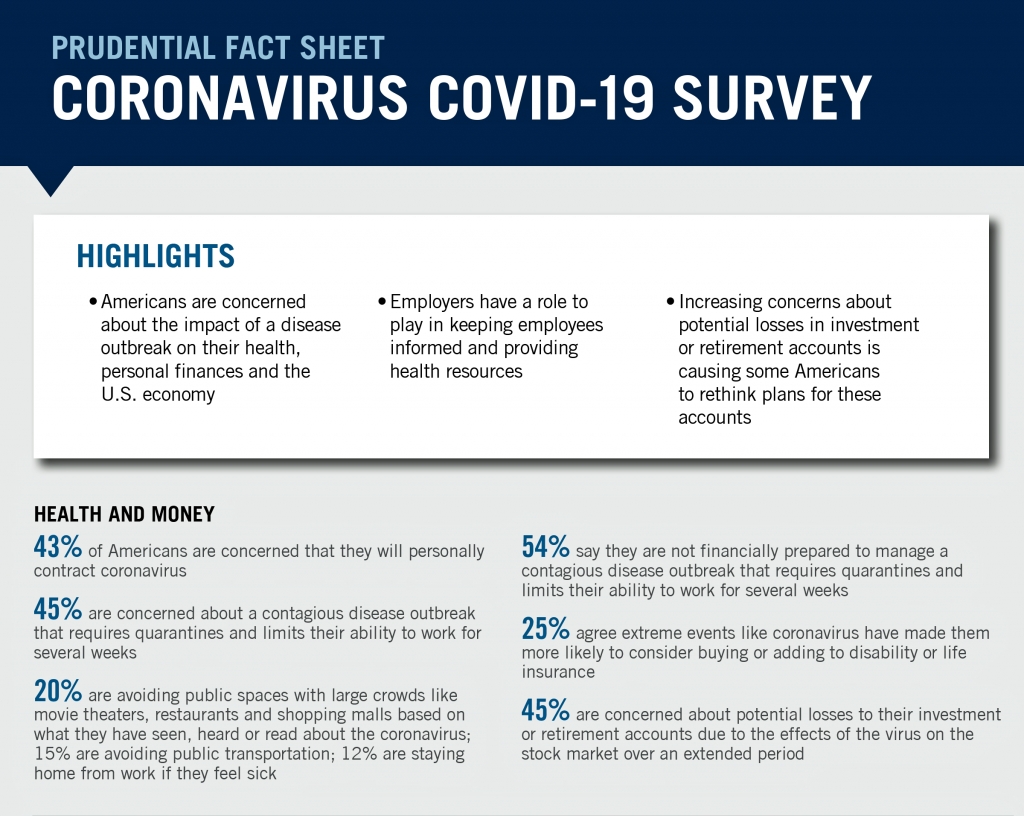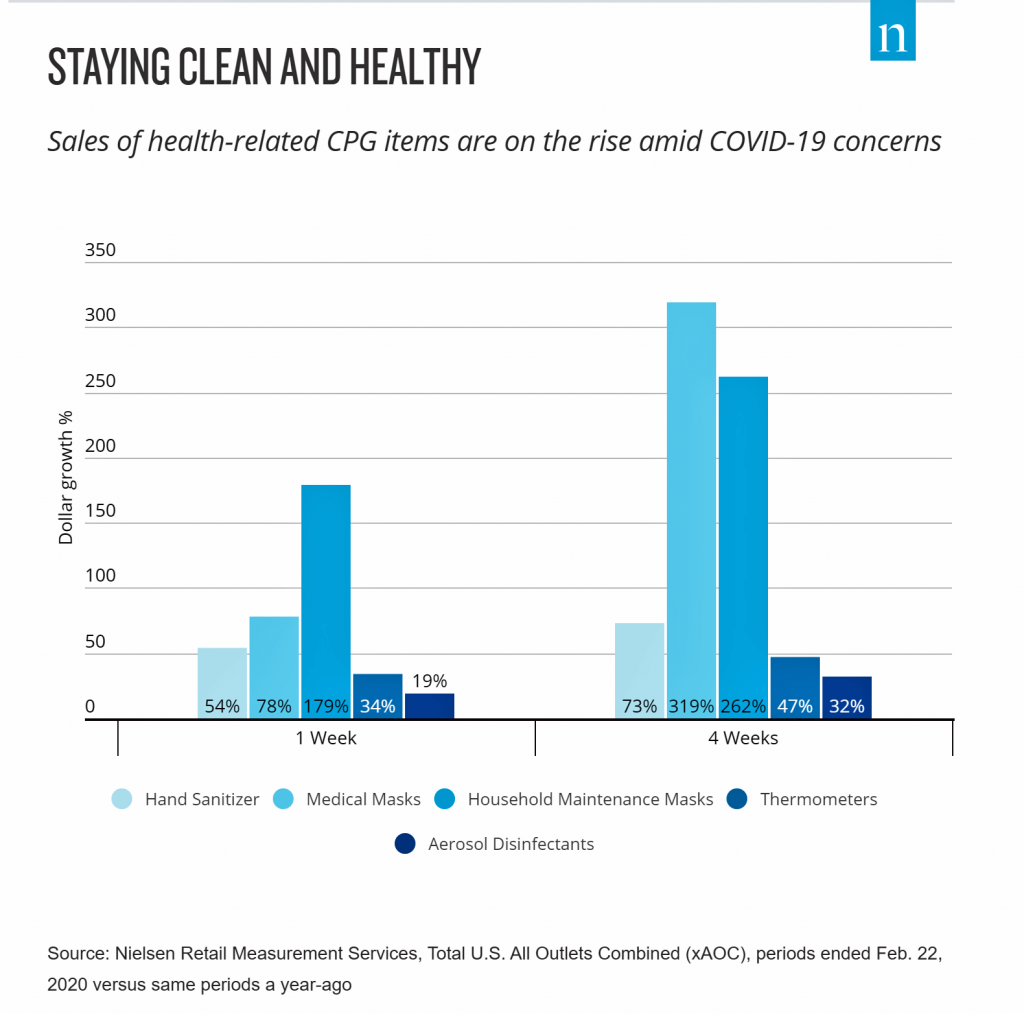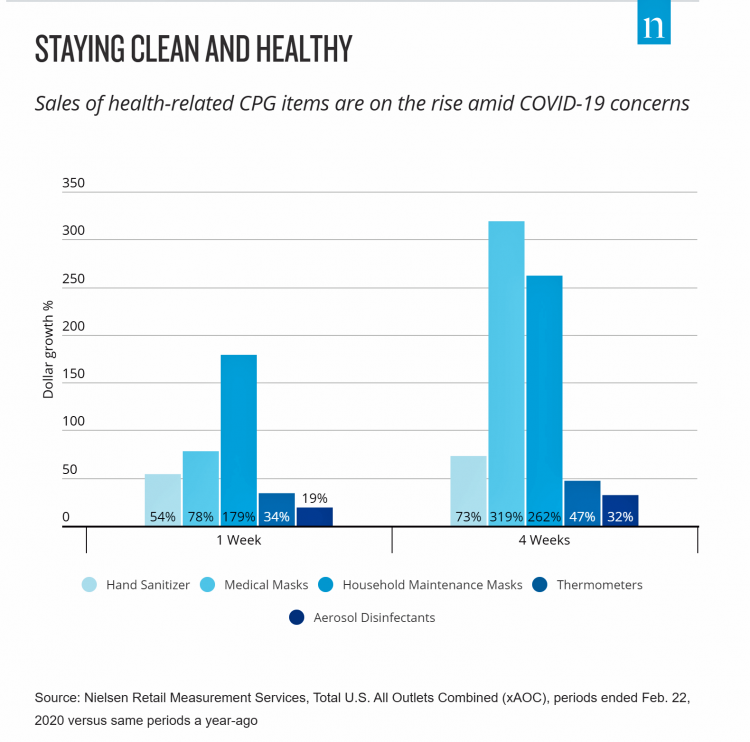With President Trump’s somber speech from the Oval Office last night, we wake up on 12th March 2020 to a ban on most travel from Europe to the U.S., recommendations for hygiene, and call to come together in America. His remarks focused largely on an immigration and travel policy versus science, triaging, testing and treatment of the virus itself.
Here is a link to the President’s full remarks from the White House website, presented at about 9 pm on 11 March 2020.
 Over the past week, I’ve culled several studies and resources to divine a profile of the U.S. consumer in the COVID-19 moment…a moment that may last most of the rest of the months of 2020.
Over the past week, I’ve culled several studies and resources to divine a profile of the U.S. consumer in the COVID-19 moment…a moment that may last most of the rest of the months of 2020.
Last week’s stock market dive leading to this week’s Black Monday raises the specter of macroeconomic decline for the nation, and even more challenged personal household kitchen table economies. Prudential surveyed U.S. consumers in late February 2020 on peoples’ perspectives of the Coronavirus. Note this poll was done three weeks ago from this writing.
First, foremost, Americans are concerned about the impact of a disease outbreak on their health, personal finances and the U.S. economy:
- 54% of people are not financially prepared to manage a contagious disease outbreak that requires quantities and limits ability to work for several weeks
- 43% of Americans are concerned they will contract COVID-19
- 45% are concerned about a contagious disease outbreak that requires quantities, limiting ability to work for several weeks
- 20% are avoiding public spaces with large crowds, 15% avoiding public transit, a
 nd 12% staying home from work if they feel sick.
nd 12% staying home from work if they feel sick.
Between the two weeks when this poll was fielded, Feb. 20-21 and Feb. 25-27, more Americans grew concerned about dealing with rising prices due to disruptions in the supply chain of goods and parts from China, business closures due to disruptions in Chinese production, and shortages of goods due to disruptions of supplies from China.
Compounding Americans personal finances is the COVID-19 era is the fact that the nation lacks universal health insurance coverage. The high-deductible health plan design in fact prevents many people from seeking preventive care or testing: uninsured patients could pay at least $500 for a test, and a 10-day hospital stay can tally $75,000 according to Gerard Anderson, professor of public health at Johns Hopkins. FYI, Dr. Anderson was co-author with Uwe Reinhardt of “It’s the Prices Stupid,” the landmark Health Affairs essay from 2003 that pointed out the key difference between U.S. health care spending wasn’t utilization — it was the underlying pricing of medical services and prescription drugs.
Stephen Shortell, Professor of Health Policy and Dean Emeritus of the Berkeley School of Public Health concurs with Anderson about America’s insurance gaps as a risk factor for the spread of coronavirus. “The degree of financial coverage for health care is not an issue with regard to the initial outbreak of infectious diseases. But it can accelerate the spread to the extent that the initial people affected delay getting tested and getting their symptoms diagnosed because they lack insurance coverage or have no regular source of care,” Dr. Shortell told the Berkeley News earlier this week.
 Nielsen has looked into the impact of COVID-19 in the past few weeks, first in a report on so-called “Pandemic Pantries” pressuring the supply chain amid coronavirus fears. “Consumers around the world are actively stockpiling emergency supplies as concerns grow that…COVID-19 could become a worldwide pandemic.”
Nielsen has looked into the impact of COVID-19 in the past few weeks, first in a report on so-called “Pandemic Pantries” pressuring the supply chain amid coronavirus fears. “Consumers around the world are actively stockpiling emergency supplies as concerns grow that…COVID-19 could become a worldwide pandemic.”
Eight days later, the World Health Organization did indeed name this new virus challenge a “pandemic.”
Nielsen is tracking five aspects for COVID-19 consumer impacts:
- The impact of the virus’s spread on consumer goods manufacturers and retailers
- Staying healthy strategies among consumers, like buying out the shelves of Purell hand sanitizers and purchasing vitamins, minerals and supplements for immune support
- Preparing the “pandemic pantry” for shelf-stable essential foods
- Passing on produce, a trend toward shelf-stable and frozen options (e.g., frozen spinach vs. fresh, pasta-and-grain-based meals vs. raw fresh protein)
- Thinking beyond the bug at other categories of consumer purchases.
 Social distancing, self-care to boost immunity and practice high standards of hygiene, and restricting travel are the things consumers can do as Health Citizens to protect themselves, their loved ones, work colleagues and communities in the life boat we’re in.
Social distancing, self-care to boost immunity and practice high standards of hygiene, and restricting travel are the things consumers can do as Health Citizens to protect themselves, their loved ones, work colleagues and communities in the life boat we’re in.
Health Populi’s Hot Points: If we contract the virus and fall into very ill health, we depend on our community hospitals to care for us. this week’s Modern Healthcare cover realizes that COVID-19 will test the healthcare industry’s readiness.
In a recent meeting I had with a leading health care system, I learned that the organization’s medical disposables supply chain was channeled through a manufacturing hub in Wuhan, China. Disruption of supply chain is well recognized by consumers in the Prudential poll, and is certainly being faced by America’s hospitals today, in real-time.
This March 9th issue of Modern Healthcare features an article titled, “COVID-19 outbreak exposes weaknesses in infection prevention.” Among the sobering findings, only 29% of nurses surveyed reported their employer had a plan in place to isolate patients suspected of having coronavirus. For more on these hospital challenges, check into Modern Healthcare’s portal on COVID-19.
There’s another article in the magazine on telemedicine strategies that are helping hospitals address COVID-19. In tomorrow’s Health Populi blog, you’ll read my conversation with Ann Mond Johnson, CEO of the ATA (American Telemedicine Association). If there’s a gift to be found in the advent of the coronavirus, it’s the private sector’s creative responses by the digital health/telehealth industry working to address the pandemic.






 Grateful to Gregg Malkary for inviting me to join his podcast
Grateful to Gregg Malkary for inviting me to join his podcast  This conversation with Lynn Hanessian, chief strategist at Edelman, rings truer in today's context than on the day we recorded it. We're
This conversation with Lynn Hanessian, chief strategist at Edelman, rings truer in today's context than on the day we recorded it. We're